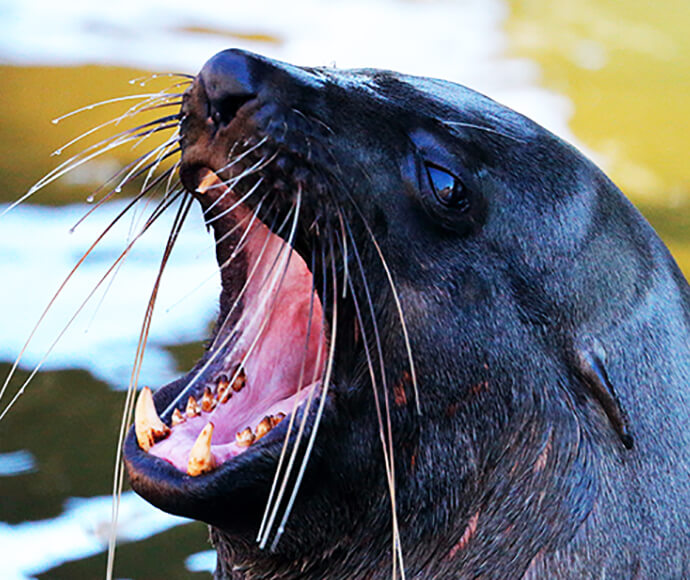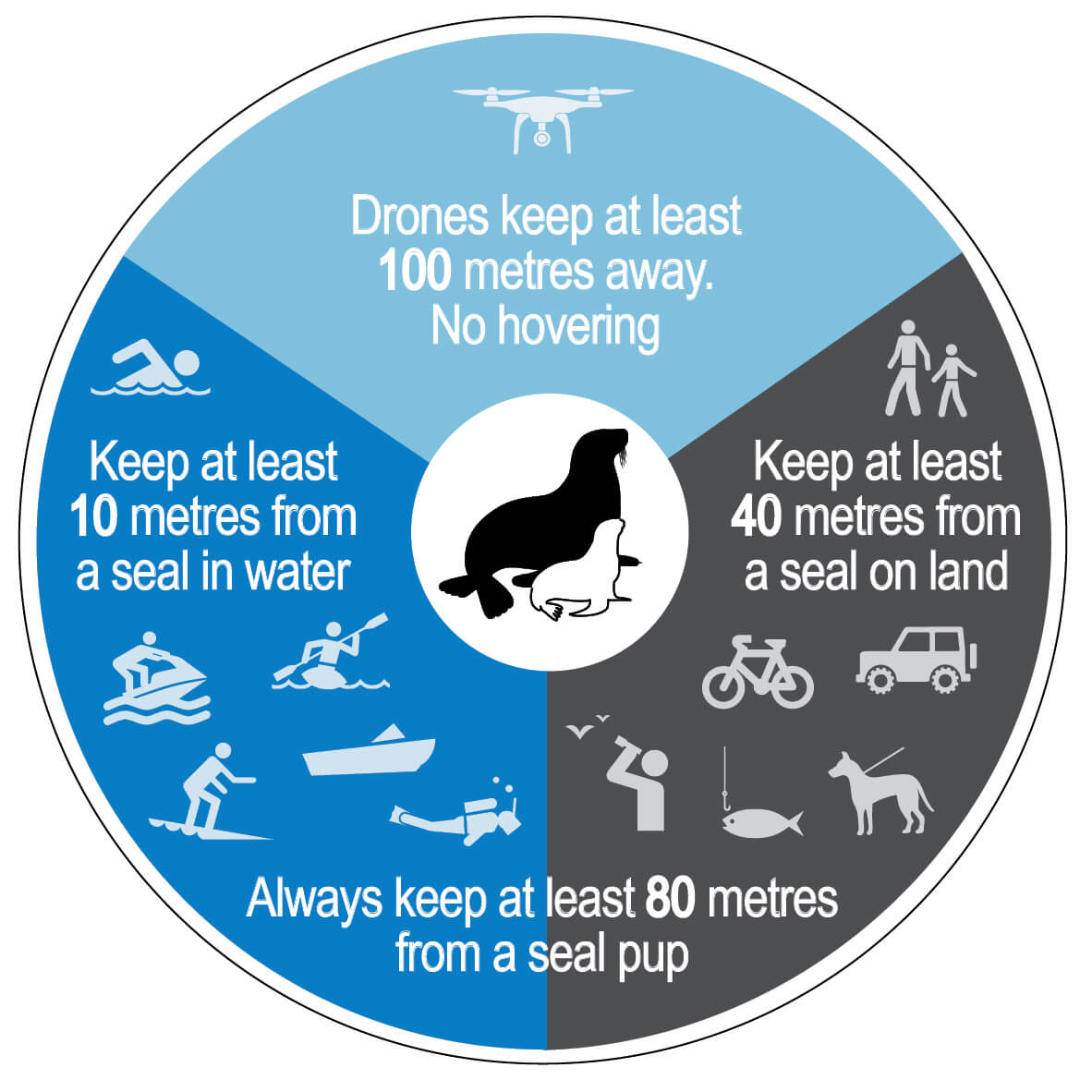Approach distances for seals are based on where the seal is located and if a pup is present. A seal is considered a pup if it is up to half the length of the adult.
If a seal comes towards you, you must move back to the minimum approach distance.

If a seal feels threatened, it may show aggression by yawning.
Approaching a seal when it is in the water
Seals are agile swimmers with strong flippers. When a seal is in the water you must keep at least:
- 10 metres away from the seal
- 80 metres from a seal pup
- 100 metres for a drone (see approaching from the air in whales, dolphins and dugong section).
If you are also in or on the water and a seal approaches you, stay calm and move away slowly. If bitten or scratched, seek immediate medical advice.
Approaching a seal when it is hauled out on land
Seals haul out to rest after foraging at sea.
If a seal feels threatened, it may show aggression by yawning, waving its front flipper or head, or calling out. Seals are very agile and can move fast on land, using all 4 limbs to run. When a seal is hauled out on the land you must keep at least:
- 40 metres away from the seal
- 80 metres from a seal pup
- 100 metres away from the seal for a drone.
Seals can often have injuries that look quite alarming but will heal well without needing veterinary assistance.
If you are concerned call the National Parks and Wildlife Service on 13000 PARKS (1300 072 757) or the Organisation for the Rescue and Research of Cetaceans in Australia on 02 9415 3333 for the animal to be checked and monitored.
Vessels watching seals resting on the rocky shore must also keep back 40 metres, or 80 metres if a pup is present. Limit the time you spend watching because it can be stressful for them. It is likely you are not the only vessel to approach them that day.

Approach distances for seals are based on where the seal is located and if a pup is present.
Never feed marine mammals
What may seem harmless fun, a photo opportunity, or a convenient way to dispose of fish scraps can put people at risk and may have a fatal outcome for a seal. Like a dog, a seal may seek out an easy feed and become demanding. It may bite or snap if teased with food or if regular feeding has come to be expected.
If you are fishing and a seal approaches, bring in your line until it leaves, or slowly move to another location. Don't turn your back or try to scare it away or it may try to defend itself.
It is illegal to intentionally feed marine mammals. They are wild animals and hunt for their food from the natural environment.
Keep your dog restrained
With marine mammal populations slowly recovering in New South Wales, there is an increased chance that you will come across one when walking on a beach, rocky shore, break wall or jetty.
Keep your dog on a leash to avoid an unexpected encounter. This will reduce stress for the animal and reduce the chance of your dog being bitten. Dogs can transfer diseases to seals and vice versa.